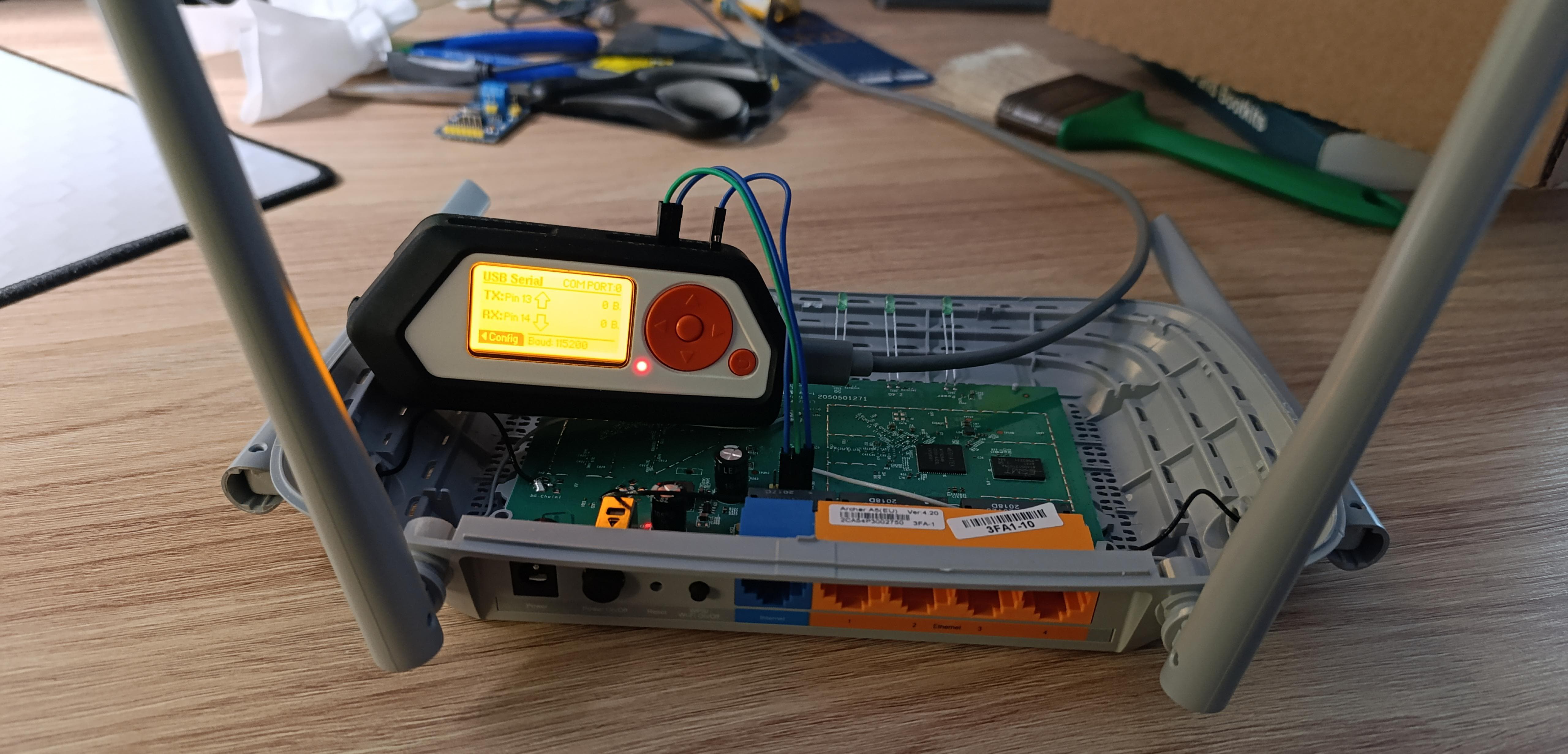
Introduction
The TP-Link Archer A5 is a cheap router from 2020. According to OpenWrt Wiki, it is identical to the TP-Link C50 v5.

External Photos
The exterior reveals basic stuff, the MAC of the router, default SSID and password, as well as the version of the router, which is v4.2.

Internal Photos
External photos are nice, but beauty comes from within.
The top of the board reveals the main SoC Mediatek MT7628AN, the ESMT M14D5121632A-2.5BBG2A 400MHz RAM IC, and the secondary Mediatek MT7612EN.
The secondary IC handles the 5GHz band, while the primary SoC handles the 2.4GHz band.
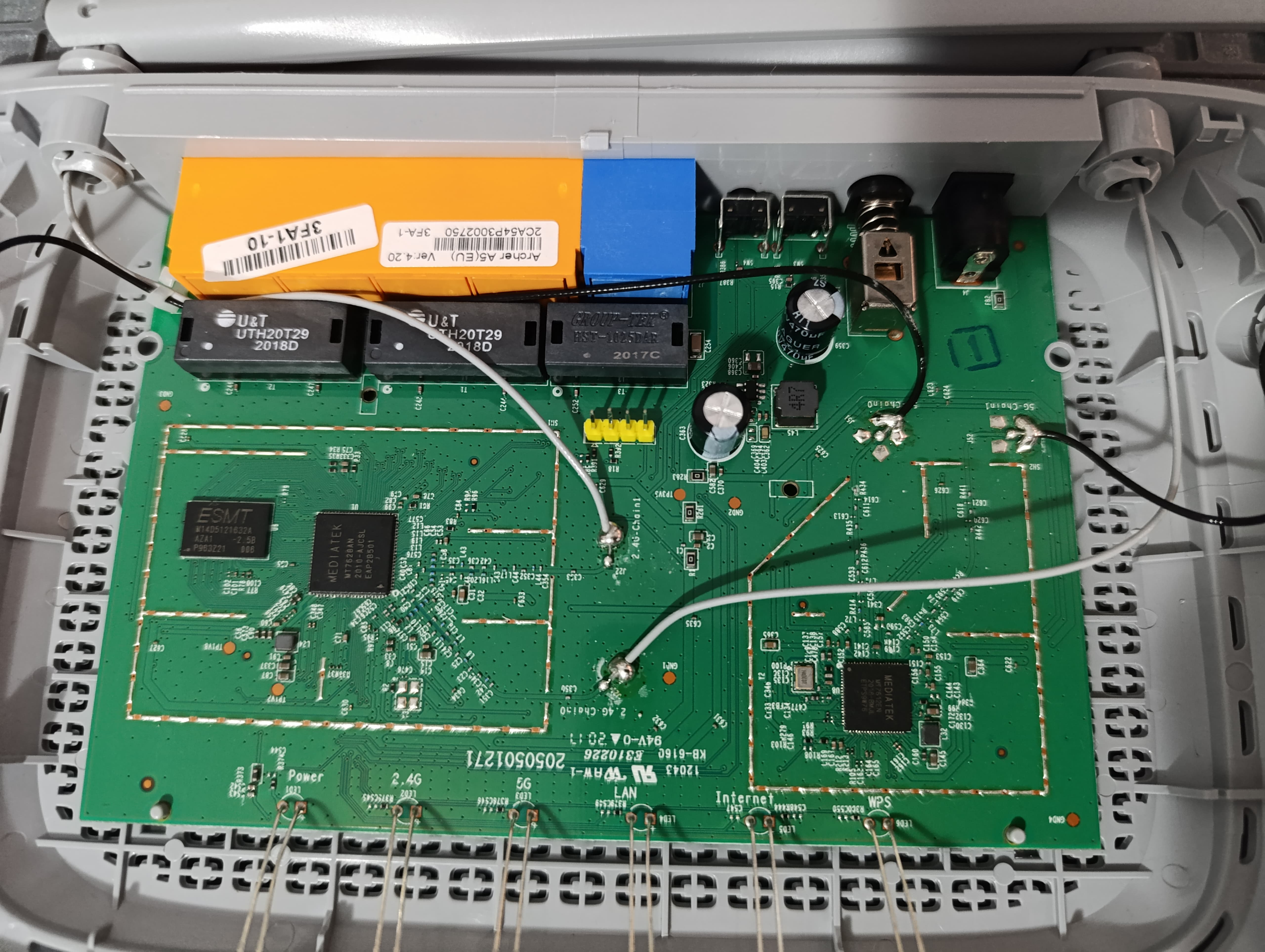
The router came without the EMFI shields soldered on the PCB.
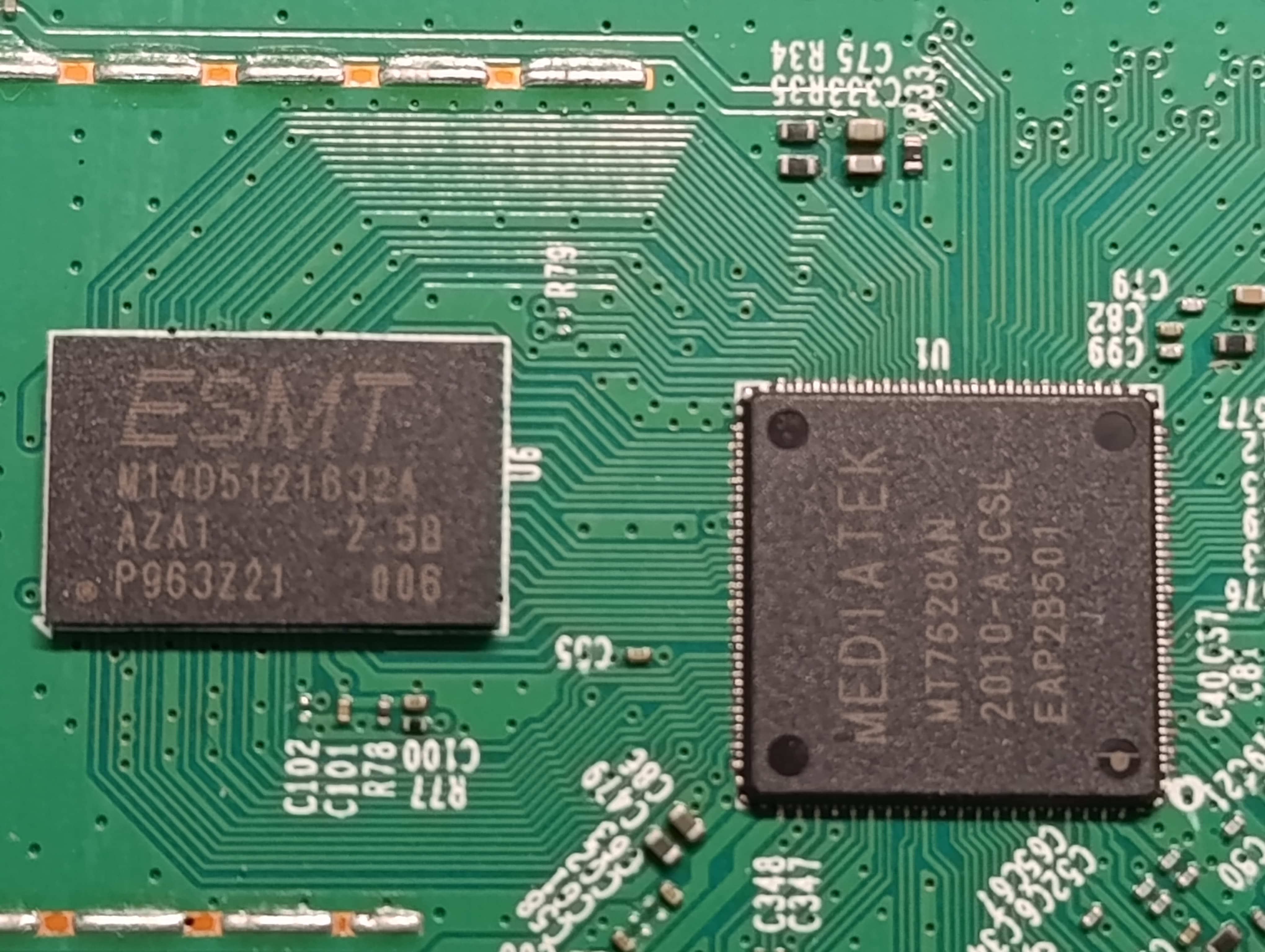
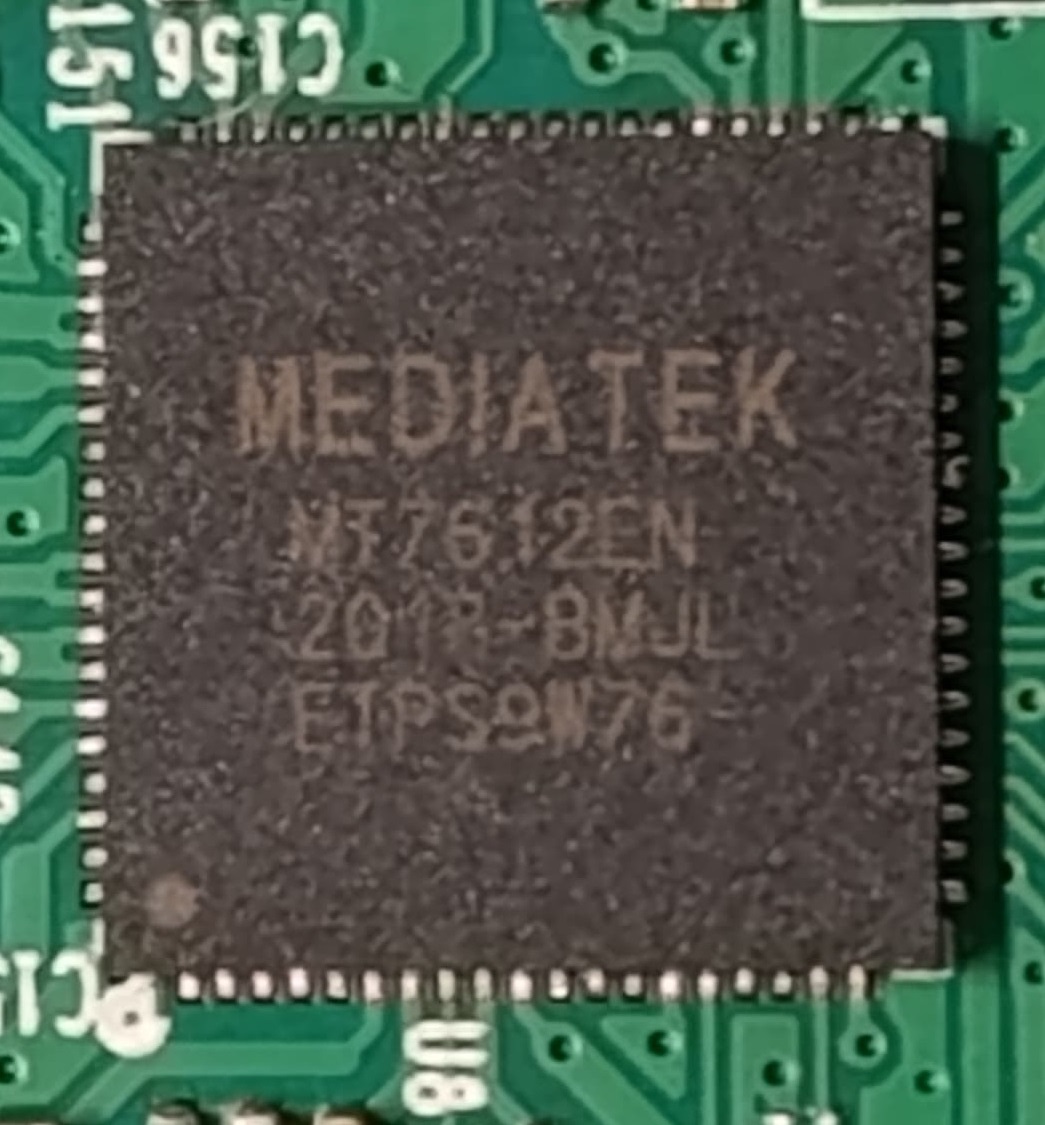
The backside of the board reveals an 8MB eFeon QH64A flash IC.
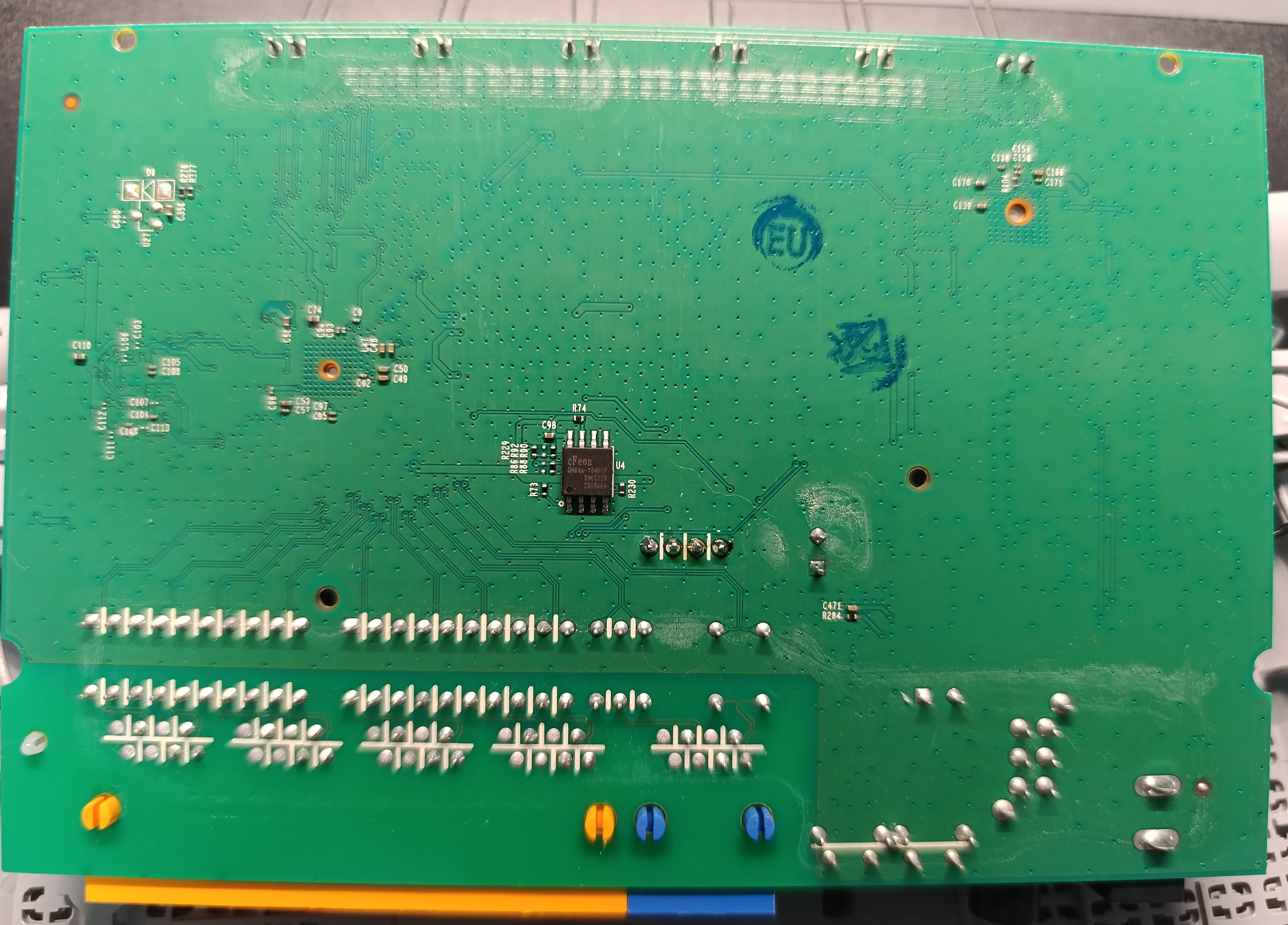
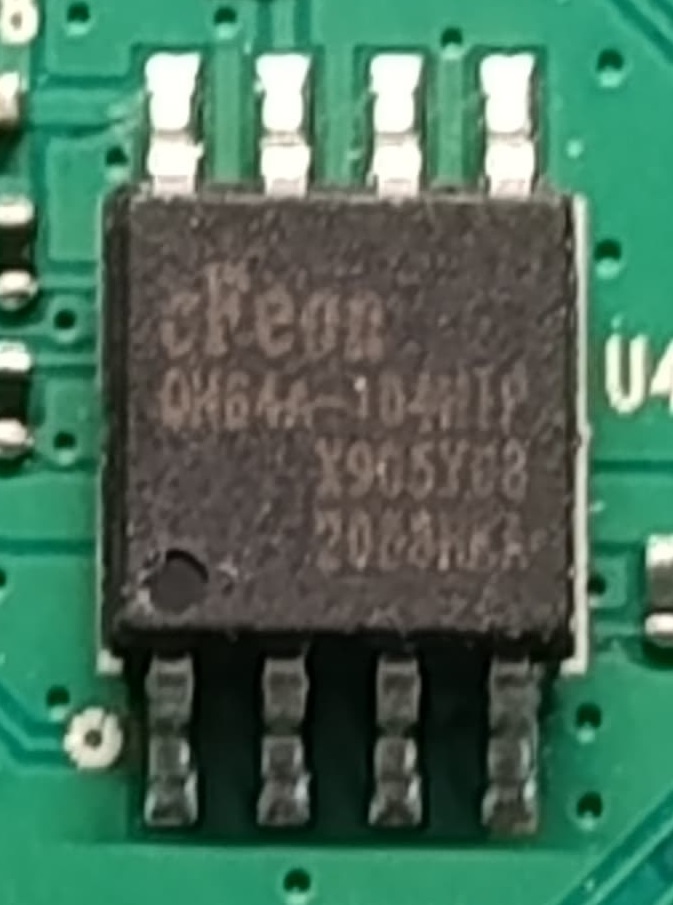
Analyzing the firmware
Luckily, the firmware is not encrypted, and can be obtained easily with a Flash reader. Using binwalk, a typical TP-Link squash-fs partition can be found.
The passwd.bak file is an interesting file, since it contains the users and passwords for this embedded system.
admin:$1$$iC.dUsGpxNNJGeOm1dFio/:0:0:root:/:/bin/sh
dropbear:x:500:500:dropbear:/var/dropbear:/bin/sh
nobody:*:0:0:nobody:/:/bin/sh
Cracking the MD5 hash of the admin user’s password reveals 1234.
While the password can be easily revealed, there are 2 encrypted xml files inside the /etc folder, the reduced_data_model.xml and default_config.xml files. When searching for the names of these files for binaries that use them, libcmm.so comes up.

Analyzing this library using Ghidra, we find a function dm_decryptFile, that makes use of another function caled cen_desMinDo. The memcpy function call gives the 8 byte key away, hinting at a possible DES key.

If decrypting this using DES, we find that it decrypts using ECB encryption scheme. In the decrypted reduced_data_model.xml file can be found the configuration for the network, firewall, Wi-Fi, WAN and ACL, and in the default_config.xml, you guessed it, more configuration for the router.

The credentials for the management interface were there too, along with evidence that this router can be confounded with the Archer C50.



We can also find WiFi connection data in /var/Wireless/RT2860AP/RT2860AT.dat.

The bonus in this file is the WscVendorPinCode, which is 94527483, the same as on the back of the device.
The other file, RT2860AP5G.dat hold the default password for the 5G AP, which is still 94527483.
Analyzing the boot messages
After plugging a USB to UART adapter and powering on the router, we can see characteristics of the boot process, such as the U-Boot bootloader 4.3.0.0, Linux version 2.6.36 or flash memory type EN25Q64(1c 30171c30) (8192 Kbytes). Also, if the firmware was not captured before, we can detect some details of the file system root=/dev/mtdblock2 rootfstype=squashf.
There are also 7 partitions that are interesting:
Creating 7 MTD partitions on “raspi”: 0x000000030000-0x000000050000 : “boot” 0x000000050000-0x000000190000 : “kernel” 0x000000190000-0x0000007c0000 : “rootfs” mtd: partition “rootfs” set to be root filesystem 0x0000007c0000-0x0000007d0000 : “config” 0x0000007d0000-0x0000007e0000 : “romfile” 0x0000007e0000-0x0000007f0000 : “rom” 0x0000007f0000-0x000000800000 : “radio”
And also some dropbear configuration messages:
[ util_execSystem ] 141: prepareDropbear cmd is “dropbearkey -t rsa -f /var/tmp/dropbear/dropbear_rsa_host_key” Will output 1024 bit rsa secret key to ‘/var/tmp/dropbear/dropbear_rsa_host_key’ Generating key, this may take a while… [ util_execSystem ] 141: prepareDropbear cmd is “dropbearkey -t dss -f /var/tmp/dropbear/dropbear_dss_host_key” Will output 1024 bit dss secret key to ‘/var/tmp/dropbear/dropbear_dss_host_key’
Analyzing the live file system
Following the blood trail, we can find the password for the dropbear user in the /var/tmp/drpopbear/ folder.

username:admin password:21232f297a57a5a743894a0e4a801fc3
Going back to the libraries, we can find in libcmm.so references to the dropbear binaries.

If you try to login with ssh on the router, it won’t work. If you look inside the dropbear_func before being enthusiastic and trying with that hex string, the md5MakeDigest function gives a hint about that being an md5 hash. Trying it on crackstation gives the password admin.

Trying it again:

This is proof that even if we know the password we need the private RSA key. We could try to modify the RSA public key with a controlled RSA private/public key pair, but then we’d need to repack the firmware and load it on the machine, since the router doesn’t automatically save the RAM contents into the compressed flash memory. At that point, you could try to install a better operating system, such as an unmodified OpenWRT to re-use the router.